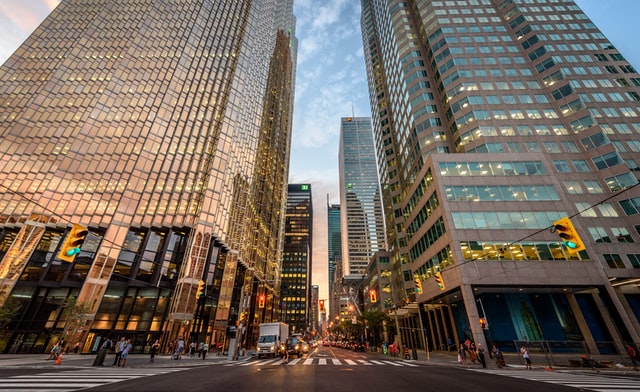All Work & No Play: Downtown Condo Values Up, But Not in "Party Neighbourhoods"
 Written By Robert Van Rhijn — As the founder of Strata.ca, Robert is one of Ontario’s leading experts on the GTA condo market. He is also the Broker of Record at Strata.
Written By Robert Van Rhijn — As the founder of Strata.ca, Robert is one of Ontario’s leading experts on the GTA condo market. He is also the Broker of Record at Strata.The COVID-19 pandemic undoubtedly did a number on Toronto’s downtown condo market as it ignited an exodus and a drop in property values. Office workers, no longer tethered to their cubicles, fled further out in search of more space. And that’s when the price of single family homes and cottages surged while downtown condo values plunged.
For over a year, people have been wondering if remote working is the new normal. And thus, will Toronto’s downtown ever be the same again? But according to data from Strata.ca, overall condo values here are back on track to hit pre-pandemic levels; although not all neighbourhoods are showing increases.
Financial District Up, ‘Trendier’ Areas Down

In July, the average cost per square foot (PSF) of a downtown condo hit $1,088 -- higher than numbers seen in May and June, and $88 more PSF than this year’s January low. But as health restrictions ease and workplaces reopen their offices, it appears some downtown neighbourhoods are seeing gains while others are showing losses.
The Bay Street Corridor, for example, saw a bump in July with condos selling for about $1,200 PSF or roughly $780,000. Just a couple of weeks into August, prices here are already skyrocketing with the average unit selling for $893,000 for an increase of $113,000.
“A lot of young professionals are heading back to the office a few days per week, so it’s understandable that demand is up,” said Francisco Hiebert, a real estate agent at Strata.ca.
Although typically known as Canada’s financial hub, the Bay Street Corridor also attracts a huge student population that attends nearby universities such as Ryerson and U of T. And according to Robert Van Rhijn, Broker of Record at Strata.ca, these students may be driving up prices as well.
“There are lots of students from wealthy families who opt to buy instead of rent,” he said. “So that’s also contributing to some of the bidding wars in this area.”
But that bump hasn’t applied to all neighbourhoods.
King West, Queen West, The Village and Distillery District actually saw a decrease in average condo prices in July. Pre-pandemic, these neighbourhoods were famous for their restaurants, bars and nightclubs. And of course, the hip young people that frequented them.
“Party neighbourhoods like King and Queen West are still sitting at March levels with The Village at its lowest since January,” said Van Rhijn.
Geographically, these areas also circle the downtown core. And that suggests rising prices downtown may be a central core phenomenon.
“When we looked at all the data on a map, the neighbourhoods with an uptick in sales activity had a higher concentration of workspaces,” said Van Rhijn. “The writing’s on the wall as people face the reality that they’ll eventually have to return to the office.”
So that begs the question -- are people returning downtown to work, but not to play?
“Rental demand is still strong in areas known for their entertainment value, but buyers don’t seem to be flocking here as much,” says Hiebert, who admits it’s too early to pinpoint why there’s such a disparity right now among downtown neighbourhoods.
For journalists: If you’d like more information on this report or would like to receive future news releases, please send your requests to media(at)strata.ca.
Starting your search for a new home? Click on any of these links to access active listings, sold listings or contact a Strata agent.
For any questions about this article or media inquires, please email media@strata.ca
